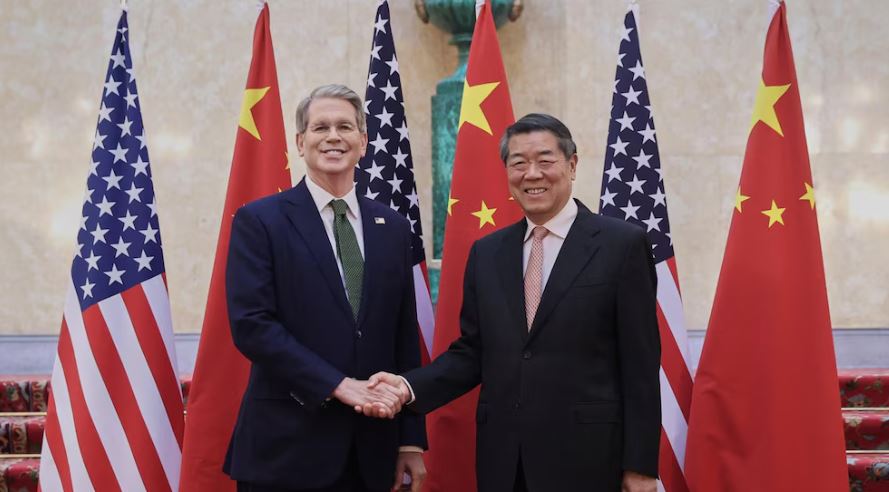The United States and China have signed a new trade agreement, President Donald Trump confirmed on Thursday, June 26, though few details have been made public.
The announcement marks a fresh development in the ongoing economic engagement between the world’s two largest economies.
Speaking late Thursday, June 26, Trump said, “We just signed with China the other day,” without elaborating on the contents of the deal. U.S. Commerce Secretary Howard Lutnick corroborated the president’s comments in an interview with Bloomberg TV, saying the agreement was “signed and sealed” two days earlier.
It remains unclear whether this agreement differs from a previously announced pact two weeks ago, which aimed to facilitate U.S. access to rare earth minerals, materials critical for high-tech industries including electronics, electric vehicles, and defense. That earlier deal also included a U.S. commitment to stop revoking visas for Chinese nationals studying at American universities.
China’s Commerce Ministry issued a statement Friday, June 27, acknowledging progress, saying both sides had “further confirmed the details of the framework.” However, the statement stopped short of specifying any concessions on rare earth exports. It did note that China would process export applications in accordance with domestic laws and called for reciprocal action from the U.S. to remove certain restrictions.
“The United States will cancel a series of restrictive measures taken against China accordingly,” the ministry said, urging both nations to “meet each other halfway.”
The agreement appears to formalize the results of earlier negotiations. Initial talks held in Geneva in May led both sides to pause planned tariff hikes. Subsequent meetings in London laid out a broader framework, culminating in this latest deal.
The negotiations have shifted focus in recent weeks from tariffs to export controls, especially on rare earth minerals. In April, Beijing imposed new permitting requirements on seven key rare earth elements, heightening concerns in Washington and among U.S. manufacturers reliant on the materials for products such as robots, wind turbines, and smartphones.
This week, China announced it had expedited the review process for export licenses and had approved “a certain number of compliant applications.” Such moves have eased immediate tensions but left long-term uncertainties intact.
In parallel with trade talks, China has taken steps on another contentious issue: fentanyl. Last week, it designated two additional substances as fentanyl precursors, subjecting them to stricter regulation. Trump has repeatedly criticized Beijing over the export of such chemicals, blaming them for contributing to the opioid crisis in the U.S. He has also imposed a 20% tariff on Chinese goods in response, part of a broader package of duties totaling 30% on imports from China.
The Geneva agreement in May called for a phased rollback of tariffs that had intensified during the height of Trump’s trade war. However, tariffs on steel, aluminum, and those linked to fentanyl remain in effect.
These policy shifts are having noticeable economic consequences. The U.S. economy contracted at a 0.5% annual rate in the first quarter, partly due to a spike in imports as businesses rushed to avoid potential new tariffs. In China, factory profits dropped over 9% year-on-year in May, with automakers particularly affected.
Looking ahead, U.S. officials signaled optimism about further trade progress. Trump said he expects a deal with India soon, while Lutnick echoed the administration’s confidence: “We’re going to have deal after deal after deal.”
While the lack of specific details has left many questions unanswered, the announcement signals a tentative thaw in U.S.-China trade relations at a time of ongoing economic strain on both sides.



